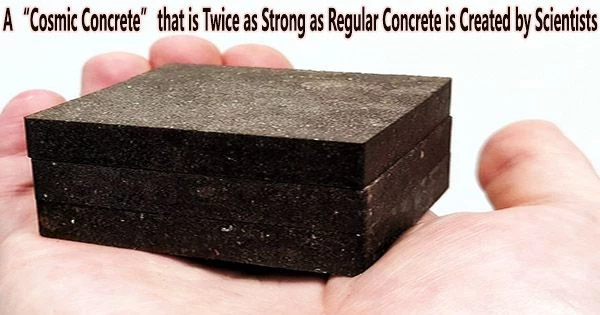A novel substance called “StarCrete,” developed by scientists in Manchester, is formed from extraterrestrial dust, potato starch, and a dash of salt and might be used to construct houses on Mars.
At the moment, it is both prohibitively expensive and challenging to build infrastructure in space. Future space architecture would need to rely on straightforward materials that astronauts can easily access, and StarCrete provides one potential option.
The material, which is twice as strong as regular concrete and is ideal for use in construction projects in extraterrestrial environments, was developed by scientists using potato starch, salt, and replicated Martian soil.
In an article published in the journal Open Engineering (EB1), the research team demonstrated that ordinary potato starch can act as a binder when mixed with simulated Mars dust to produce a concrete-like material.
When tested, StarCrete had a compressive strength of 72 Megapascals (MPa), which is over twice as strong as the 32 MPa seen in ordinary concrete. Starcrete made from moon dust was even stronger at over 91 MPa.
This discovery advances earlier work from the same team that utilized the blood and urine of astronauts as a binding agent. Although the finished product outperformed typical concrete in terms of compressive strength (around 40 MPa), the procedure had the disadvantage of frequently requiring blood. This alternative was deemed to be less practical than using potato starch when operating in a hostile environment like space.
And anyway, astronauts probably don’t want to be living in houses made from scabs and urine!
Dr. Aled Roberts
“Since we will be producing starch as food for astronauts, it made sense to look at that as a binding agent rather than human blood. Also, current building technologies still need many years of development and require considerable energy and additional heavy processing equipment which all adds cost and complexity to a mission. StarCrete doesn’t need any of this and so it simplifies the mission and makes it cheaper and more feasible.”
“And anyway, astronauts probably don’t want to be living in houses made from scabs and urine!” Dr. Aled Roberts, Research Fellow at the Future Biomanufacturing Research Hub, and lead researcher for this project.
The team calculate that a sack (25 Kg) of dehydrated potatoes (crisps) contain enough starch to produce almost half a tonne of StarCrete, which is equivalent to over 213 brick’s worth of material.
For comparison, a 3-bedroom house takes roughly 7,500 bricks to build. They also discovered that magnesium chloride, a common salt that may be obtained from the Martian surface or via astronaut tears, greatly increased the strength of StarCrete.
The next stages of this project are to translate StarCrete from the lab to the application. Dr. Roberts and his team have recently launched a start-up company, DeakinBio, which is exploring ways to improve StarCrete so that it could also be used in a terrestrial setting.
If used on earth, StarCrete could offer a greener alternative to traditional concrete. Due to the extremely high temperatures and energy requirements involved in making cement and concrete, they contribute around 8% of the world’s CO2 emissions.
On the other hand, StarCrete can be prepared in a regular oven or microwave at typical “home baking” temperatures, resulting in lower production energy costs.





